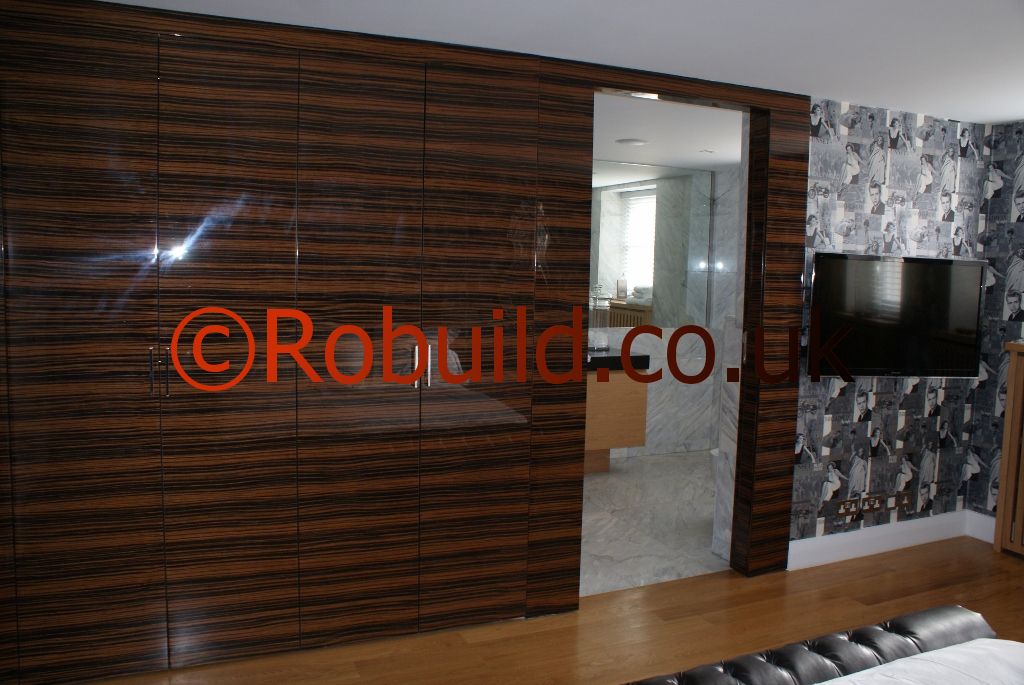Walls account for the largest surface area of a room, making the choice of a decorative finish very significant. Whether it be mosaic tiles, flock wallpaper or vinyl paint, the finish will influence the entire room’s character.

The choice of wall decoration is dependent upon suitability of appearance, amount of maintenance needed, and cost. Living areas and bedrooms, for example, have relatively minor maintenance problems and the choice for these rooms is likely to be made mainly on the basis of the colour, pattern and texture required for the particular room.
A painted or wallpapered surface might be the most likely choice, although other appropriate finishes could be wood panelling or boarding. Rooms which are liable to high humidity,such as kitchens and bathrooms, need a more durable surface capable of withstanding water splashes, detergents or grease marks and regular cleaning. Tiles, plastic laminates or, in the less vulnerable areas, vinyl wall coverings, would be suitable choices for these areas.
Paint or wallpaper?

In rooms that do not require a particularly durable surface, and have suitable wall surfaces (such as smooth plaster with no cracks), the least expensive wall decoration will usually be a painted finish. This may also be the best choice on other grounds. The advantages of paint are that it is readily obtainable from stock without special ordering, inexpensive, can be applied by a competent handyman, and it is the least frustrating way to obtain the colour you want. With wallpaper, hours of searching through pattern books may fail to produce the colour required in a suitable pattern.
But with paint the availability of a wide range of standard colours and the facility for precise mixing of special colours make it possible to obtain an exact choice. Mistakes can be corrected more easily with paint as well. If you find, for example, after hanging one or two pieces of wallpaper that the scale of the pattern or the general effect is not as anticipated, it will be necessary either to live with your mistake, or to reject the whole supply outright and buy fresh stock. If, however, a sample panel of paint indicates the colour is strong or the hue needs adjusting, it is a simple matter to mix in the appropriate corrective colour. Always prepare a test panel and check this before proceeding with an entire room, since a small pattern on a colour card can give a false impression of the effect over large areas.
Varieties of paint
All paints are basically similar in composition consisting of a pigment mixed in a suitable medium, with various additives to improve certain qualities. Hard gloss oil paint uses linseed oil as its medium, mixed with pigment, a thinner to improve workability, and a drier to speed up drying. A traditional finish for woodwork, it is usually applied to walls only when a durable, washable surface is required. Before beginning to paint it is essential that the wall is dry, since the paint forms an impervious film which will not allow moisture to evaporate; if dampness is present, it will normally cause blistering and flaking of the paint layer. Because it is non-absorbent, a gloss paint surface on walls or ceiling in a room subject to high humidity will cause condensation-in severe cases water will collect and drip from the ceiling and run down the walls. It is not, therefore, a very suitable material for kitchens and bathrooms, although in the past it was often used in these areas because of its washability.
Today, however, there is a wider choice of more suitable finishes, made from various synthetic resins and marketed under different trade names. Condensation in kitchens and especially in bathrooms will occur to some extent, no matter what type of wall covering you choose to use. Enamels formerly meant paints designed solely for applying to metal or clay surfaces which are fired at high temperatures to produce a stoved finish (vitreous enamel), but the term is often used loosely today to describe a superior hard gloss paint for normal use. It is especially good to use on flush surfaces such as cupboards or on areas where a fine finish is wanted. Most gloss paints can be thinned with mineral turpentine substi tutes, but it is important to follow the manufacturers’ directions as some have complex compositions.





